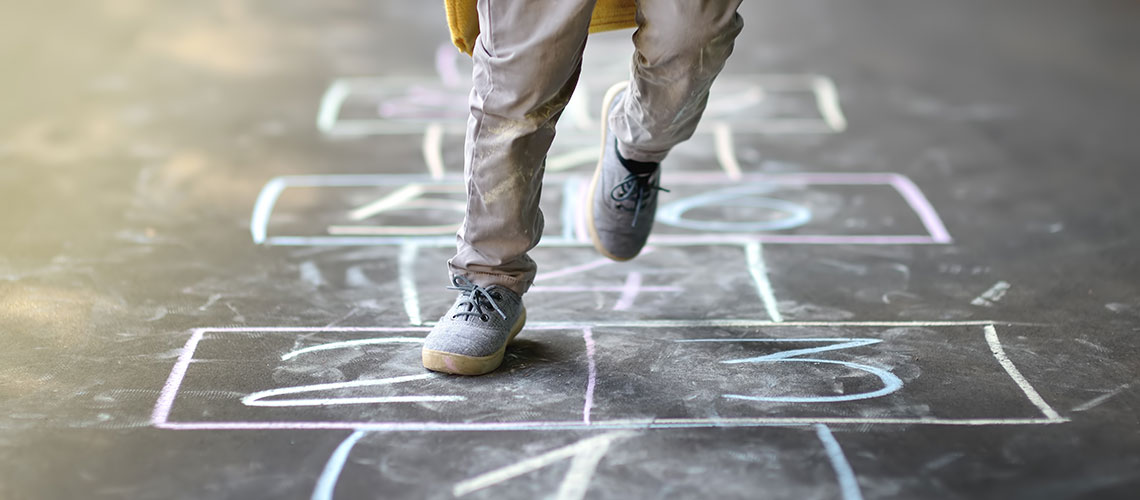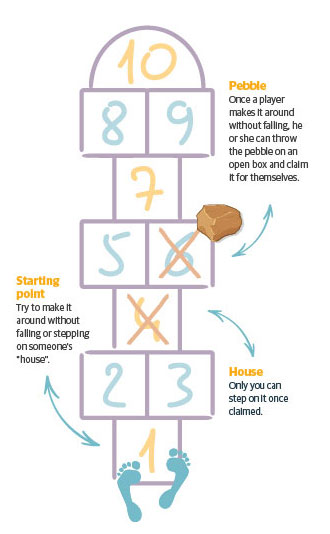Making time to play is important for your wellbeing, no matter what your age. Here’s one game you can play with your family that will get you active while having lots of fun.

There’s a saying that goes: “You don’t stop playing because you get old; you get old because you stop playing.” Playing is an important part of life, but as we become adults, many of us forget to nurture this part of ourselves as our stresses increase. Studies have shown that even though playing is the first thing we lose when we grow up, it’s one of the things that can help with releasing endorphins (feel-good hormones), improving brain use and sparking creativity.
Part of the reason playing is so important in modern times is that many of us spend a lot of time on our devices, especially cellphones. Children also spend a lot of time watching TV instead of playing outside. Playing is not only fun but also helps growing children develop their motor skills.
Since COVID-19 has isolated most of us, getting outside to play is a safe way to get social and have fun together again. Playing also makes us more active physically. Getting physical isn’t just reserved for work or the gym, playing allows you to move your body while also distracting your mind from the stresses of life. Playing also allows you to de-stress and have fun, which repeatedly over time helps you perform better at work and in other areas of your life where you have responsibilities.
We asked a team member from Nigeria to share a game that continues to bring them a lot of joy.
For those of us who may have forgotten, think of some happy childhood games to revisit with your family. Here’s one to get you started:
Suwe (or hopscotch)
It may have a different name in Nigeria, but this game is enjoyed by children worldwide. Our Head of Marketing, Branding and Communication in Nigeria, Omolara Aluko, shared this game because of the wonderful childhood memories it has for her.
Material you’ll need
Chalk and pebbles. A hard outdoor surface like brick, cement or tarred paving. Or you can draw lines on a sandy floor.
How to play
- Draw a big rectangle on the ground with chalk and divide it into two columns, each with a number of squares (called “boxes”). The number of boxes will depend on how many players there are. Two people will usually play against each other, but sometimes two can play against another group. You can also lay out the playing field like the diagram we’ve shown here.

- The game starts with each player holding their own pebbles, made of either metal or plastic. Then, taking turns, each one hops around the squares on one foot trying to make it around the rectangle.
- Once a player makes it around without falling, he or she can throw the pebble on an open box and claim a house for themselves.
- The moment you have a house, other participants are not allowed to step on it unless you allow them. They need your permission to enter; if any part of their body touches the area marked as your house, they’ll be disqualified.
- Imagine once a player has acquired three houses. The game becomes difficult for their opponent as he or she will have to jump over those houses with only one leg. This is the fun part of the game.
SUWE RULES ARE SIMPLE:
- You cannot step on the line. If you do, you lose your turn;
- You cannot step into the box that has the pebbles, you have to jump over it;
- You cannot step into a house (a column or boxes already won and marked by a player);
- You can only use one of your legs except when you are in your own house. To get a house, you must throw a pebble over your head without looking back; wherever it lands is where your house is situated.
Getting or building a house within the game’s boxes is the goal of every player, and the player with the largest number of houses at the end of the game is the winner.
